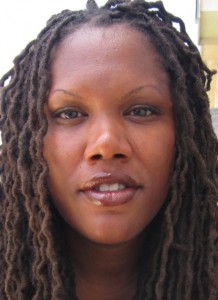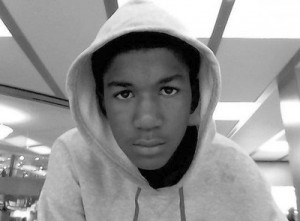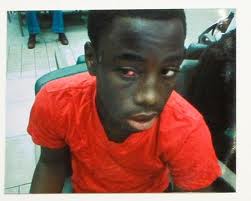By Joshunda Sanders
May 29, 2012
Mainstream media often portray African-American youths, especially black men and boys, as criminals, crime victims and predators. These stereotypes, according to social justice advocates, can create a racially charged atmosphere that results in violence such as the shooting death of teenager Trayvon Martin.
U.S. popular culture has become increasingly desensitized to one-dimensional portrayals of Black youths. Perpetuation of them as dangerous has been embedded in American society not only by words and images projected by journalists but also by a wide variety of other media and entertainment sources, including the Internet, movies and video games.
Clearly, the perception of African-Americans and other people of color as inferior to whites is rooted in the nation’s legacy of racial hierarchy, a system of stratification based on belief that skin color makes whites superior. Also contributing to embedding these stereotypes is that even as U.S. Census data show a growing number of nonwhites in America, fewer people of color are in decision-making positions at daily newspapers, television and radiostations, and online news organizations.
Media coverage of the February shooting of Trayvon Martin, 17, in Sanford, Fla., by neighborhood watchman George Zimmerman, exemplifies negative treatment of black youths in the media. After a controversial delay, Zimmerman was arrested and charged with second-degree murder in the unarmed teenager’s death.
At the center of the case are issues related to race, gun rights and whether Zimmerman was acting in self-defense.
In most media stories last week, autopsy results showing that Martin’s blood had traces of THC, the active ingredient in marijuana, overshadowed other new evidence. An Associated Press report from Orlando, Fla., began: “Trayvon Martin had marijuana in his system. He was shot through the heart at close range.”
Many of these stories were published with photographs showing cuts and scratches on Zimmerman’s face and head. A police report said he”appeared to have a broken and a bloody nose and swelling of his face.”
In the same week, an all-white, six-person jury in Houston acquitted Andrew Blomberg, 29, a white police officer, in the alleged beating of 15-year-old Chad Holley after Holley was arrested for burglary in March 2010.
In video footage from a security camera, which jurors were shown in court, Holley was seen falling to the ground after trying to hurdle a police squad car, the AP reported, and was “surrounded by at least five officers, some who appear to kick and hit his head, abdomen and legs.”
Blomberg testified that he didn’t kick or stomp Holley. Community activists decried the verdict and the racial makeup of the jury.
The presumption of guilt can also apply to young black women. When Rekia Boyd, 22, was fatally shot by an off-duty Chicago police detective in March, her death was overshadowed in mainstream media by the Martin case.
Boyd was with friends on a street near the detective’s home when words were apparently exchanged and he fired several shots, one of which struck Boyd in the head. No charges have been filed in the incident. Boyd’s family has filed a civil lawsuit against the detective and the city.
In its report on the shooting, one Chicago television station noted that Boyd was hanging out with a group “at 1 in the morning.”
Stories about black youths that don’t reinforce stereotypes, don’t involve celebrities and that tell narratives about everyday lives of black people haven’t been a priority in news coverage, says author Bakari Kitwana, executive director of Rap Sessions in Westlake, Ohio. Through Rap Sessions, Kitwana leads discussions on college and high school campuses nationwide to counter mainstream media narratives about the hip-hop generation.
In addition to being stereotyped in media, Kitwana says, black youths are also criminalized by three other circumstances.
“Job options are limited, especially if you’re working class, which is different from previous generations,” he says. “The military doesn’t have a draft so, ultimately, it’s composed of people who are so pushed out of other life options. The military becomes a way of not being totally impoverished. Add to that limited education because of the cost of a college degree.”
Publishers, editors and producers who decide which news stories are important often don’t choose ones that humanize or contextualize lives of black youths. In journalism, decision makers are largely white.
A 2011 study by the Radio Television Digital News Association and Hofstra University showed that while the percentage of people of color in the U.S. population had risen since 1990 from 25.9 percent to a projected 35.4 percent, the number in television rose 2.7 percent and fell in radio. TV news diversity, it noted, “remains far ahead of the newspaper.”
“The way that journalism is currently practiced and structured doesn’t allow for the telling of stories of underrepresented people,” says Malkia Cyril, founder and executive director of the Center for Media Justice in Oakland, Calif. Privatization of corporate media is one reason that continues to be true, she says.
In 1983, 50 corporations controlled U.S. media, according to “The Media Monopoly” by Ben Bagdikian, a longtime journalist and media critic. By 2004, in his revised and expanded “The New Media Monopoly,” Bagdikian wrote that the number was five – Time Warner, Disney, News Corp., Bertelsmann of Germany and Viacom, with NBC a close sixth.
“The way that journalism is on the open market means that stories are for sale, and what sells is stereotypes,” Cyril says. “Market-produced coverage will tend to misrepresent youth.”
The implications of “this charged environment can result in the dehumanization of black life and regressive political decisions that can lead to violence, as the Stand Your Ground Laws resulted in the shooting death of Trayvon Martin,” she added in a follow-up email. “Otherwise, the story gets framed as coverage leads to bad individual behavior, and the systemic piece gets lost.”
When media producers in journalism and popular culture media like movies, television series and video games are mostly white, chances that young people will be humanized and fully represented are slim, says Eleni Delimpaltadaki Janis, public opinion and media research coordinator for The Opportunity Agenda in New York.
“You see few images of black men and boys being good students or being good fathers,” she says. “They’re really fewer images of men in those roles compared to reality. It’s not just the news coverage. It’s also every type of media, but also in entertainment media, including video games. They all do a good job at using negative images of black boys and men for entertainment.”
Solutions include reporters intentionally incorporating black youths into everyday or evergreen stories like those about Christmas shopping, Janis says. Kitwana adds that it’s also important for journalists to remember that their profession carries the weight of social responsibility since democracy can’t function properly if journalism doesn’t function properly.
Eileen Espejo, director of media and health policy at Children Now in Oakland, says producers across the media spectrum should seek ways to avoid stereotypes. “We don’t want there to be a quota,” she says. “But we want you to think more creatively about the roles that people of color can play, and break out of the traditional mold.”
Joshunda Sanders writes media critiques for the Robert C. Maynard Institute for Journalism Education. Her stories and other media critiques are available atwww.mije.org/mmcsi and can be republished free of charge. For more information, please contact Elisabeth Pinio at epinio@mije.org or 510-891-9202.










HELP US LORD!!!!!!!!